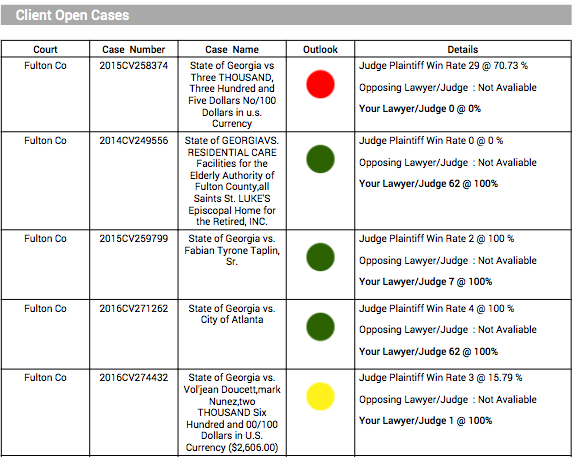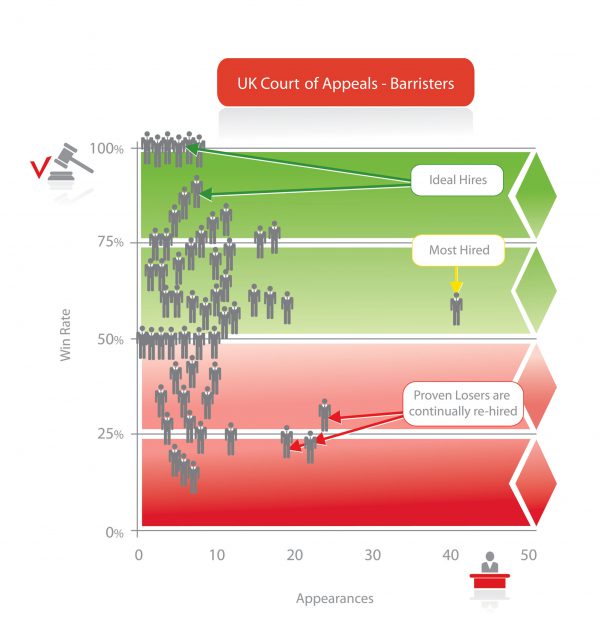Using big data to advance diversity and inclusiveness
Using big data to advance diversity and inclusiveness

Written by Fernando Garcia for big data.
In May, I attended the Chief Legal Officer Exchange in Miami. The conference took place over two days and was a great opportunity to network and make new contacts. I also had the pleasure of taking part in a panel of esteemed colleagues to discuss “Moving the Needle on Diversity and Inclusiveness” within the legal profession.
My colleagues at Newegg.com, Microsoft, and Miller Thomson LLP discussed their personal and career experiences around implementing diversity initiatives and shared stories of what worked and what didn’t.
At the conference, I was also introduced to a tool that will not only help revolutionize how we as general counsel select external counsel to increase our chances of success at litigation but also promote true diversity and inclusiveness within the legal profession.
How? Premonition Analytics offers general counsel in the United States and Europe a tool that uses artificial intelligence to read, analyze, and categorize litigation and provides statistics on the success rates of lawyers vis-à-vis the subject matter, the judges, and other variables.
After a thorough analysis of the case law across the United States, Premonition has made several critical observations:
• Women are generally more successful at litigation than their male counterparts — associates are an average three-per-cent better and partners are 12-per-cent better.
• Big Law firms win more often than lawyers of smaller firms, but the difference between the two is minimal.
• 92.3 per cent of the top performers appearing before the average judge come from small and mid-size firms.
Why is this important to the Canadian legal profession? Premonition is nearly complete in analyzing Canadian cases. If it has similar findings, then the job of the GC will potentially be made easier, and diversity and inclusiveness will undoubtedly be accepted as good business.
For example, we tend to find that while women are equally represented in law school, they make up only slightly more than 20 per cent of the partners at law firms and only 4.88 per cent are litigators.
Somewhere in their careers, women fall out of the system. One of the possible explanations for this is that subconsciously, partners within law firms mentor and refer the most high-profile work to other associates who look like them with regard to ethnic background, gender, etc.
Rosabeth Moss Kanter in her book Men and Women of the Corporation called this “homosocial reproduction,” which refers to the tendency of people to select incumbents who are socially similar to themselves. Women associates, therefore, do not always have access to the networking, high-profile cases, and the support from partners needed to make partnership or they select themselves out.
That being said, if they are in fact found to be much more successful than their male counterparts, we as GCs will have another reason to select women litigators, because they win more. And law firms will have to hire and make more of an effort to add women into partnership roles because we as GCs demand it.
Similarly, for many of the same reasons highlighted above, ethnic, racial, and other “minority” groups tend to own and/or work for small or sole boutique law firms. This means many of them are missing out on high-profile work since it is too risky for a GC to provide them with carriage of bet-the-company litigation, rather going with the cover-your-ass mentality of hiring a large national firm.
In the event of a loss, at least the decision to hire “the best lawyer money can buy” would not be questioned by the CEO. However, as Premonition found, these smaller law firms tended to be the source of far more top performers than the big law firms, but at much lower rates. GCs will be more likely to start selecting and using these lawyers.
By allowing a GC to hire the best counsel for the case based on track record and results, not based on subjective referrals, reputation, or highest cost, there will be greater incentive for GCs to hire women, associates instead of senior partners, and smaller boutique firms to perform the work.
This will have a significant impact on advancing diversity and inclusiveness within the legal profession. Analytics such as these allow for true colour- and gender-blind hiring of external counsel and supports the proposition that has been advanced by so many for so long that diversity creates a strategic business advantage.
Now we will have the numbers to prove this and law firms and the legal profession will have to take notice. With the tool available, reviewing the performance of external counsel before selecting the best person for the job will become part of standard due diligence.









